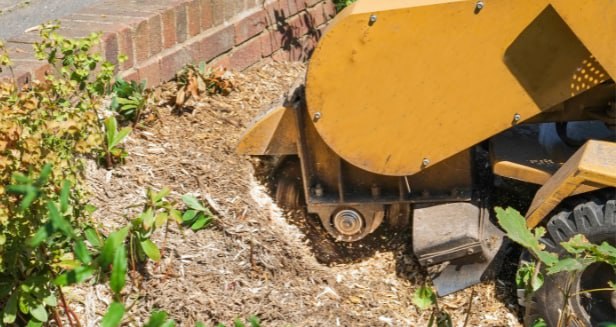
Introduction: Maintaining a well-kept hedge is a key aspect of garden care, and dealing with thick or woody stems can be a significant part of this process. At Rochester Tree Surgeons, we understand that properly managing these tough stems is essential for a healthy and attractive hedge. In this blog post, we’ll provide practical tips for cutting and managing thick or woody stems, ensuring your hedges remain in excellent condition.
- Understanding Thick and Woody Stems
What Are Woody Stems?
- Woody stems are branches that have matured and hardened over time. They are typically thicker and tougher than newer growth, and they can be more challenging to cut. These stems often occur in older or less regularly maintained hedges.
Why Proper Management Matters
- Addressing thick or woody stems is crucial for maintaining the health of your hedge. Overgrown or neglected hedges can develop dense, woody branches that impede growth and affect the hedge’s overall appearance. Proper management ensures that your hedge remains vibrant and promotes healthy new growth.
- Essential Tools for Cutting Woody Stems
Pruners and Secateurs
- For smaller, woody stems (up to about 2.5 cm in diameter), high-quality pruners or secateurs are ideal. Ensure they are sharp and well-maintained to make clean cuts and avoid damaging the plant.
Loppers
- For slightly thicker branches (2.5 to 5 cm in diameter), loppers with long handles can provide the necessary leverage to cut through woody stems effectively. Choose loppers with sharp, high-quality blades to make the task easier.
Pruning Saws
- A pruning saw is often required for branches thicker than 5 cm. Various types, including curved and straight saws, can handle larger branches with ease. Ensure your saw is sharp and designed for the type of wood you are cutting.
Hedge Trimmers
- For overall maintenance and to manage smaller, woody stems, electric or petrol-powered hedge trimmers can be useful. These tools are particularly effective for shaping and cutting back dense hedges.
- Techniques for Cutting Thick or Woody Stems
Proper Cutting Technique
- Angle of Cut: When cutting woody stems, aim for a clean, angled cut to promote quicker healing and reduce the risk of disease. Avoid crushing the wood by applying even pressure.
- Cutting in Sections: Cut very thick stems in sections. Start with a notch on the underside of the branch, then make a top cut to remove the limb. This technique prevents the branch from tearing the bark of the main stem.
Avoiding Damage
- Avoid Over-Pruning: Removing too much of the woody stem can stress the plant. Aim to trim at most one-third of the hedge’s overall growth at a time.
- Sanitise Tools: Always clean and sterilise your tools before and after cutting to prevent the spread of disease between plants.
- Seasonal Considerations for Cutting
Best Time for Cutting
- Late Winter to Early Spring: This is often the best time to tackle thick or woody stems. Pruning during dormancy reduces the risk of disease and allows the hedge to recover and put out new growth in the spring.
- Avoid Peak Growing Season: Cutting thick stems during peak growing seasons (late spring to summer) can stress the hedge and lead to slower recovery.
After-Care
- Monitor for Health Issues: After cutting, check the hedge for signs of disease or pests. Proper aftercare, including watering and feeding, will support recovery and encourage new growth.
- When to Seek Professional Help
Complex or Large Hedges
- Professional services can ensure the safe and effective cutting of large or complex hedges, particularly those with extensive woody growth. At Rochester Tree Surgeons, our experts are equipped to handle even the most challenging hedge-cutting tasks with precision.
Expert Advice
- If you need help with the best techniques or tools for your specific hedge, consulting a professional can provide valuable guidance. We can offer tailored advice based on your hedge’s species and condition.
- Additional Tips for Successful Hedge Cutting
Regular Maintenance
- Regular hedge cutting helps to manage growth and prevents the development of thick, woody stems. Aim to trim your hedge at least once or twice a year, depending on its growth rate and type.
Mulching and Feeding
- After cutting, apply mulch around the base of the hedge to retain moisture and provide nutrients. Regular feeding will support healthy growth and help the hedge recover more quickly from pruning.
Safety First
- Always wear appropriate protective gear, including gloves and eye protection, when cutting woody stems. Ensure your tools are in good working condition to avoid accidents and injuries.
Conclusion: Dealing with thick or woody stems in hedges requires the right tools, techniques, and timing to ensure effective results and maintain the health of your plants. By understanding how to manage these challenging branches, you can keep your hedge looking its best and prevent future issues.
Call us on: 01634 557398
Click here to find out more about Rochester Tree Surgeons
Click here to complete our contact form and see how we can help you with your tree’s needs.